Last updated on April 2, 2024
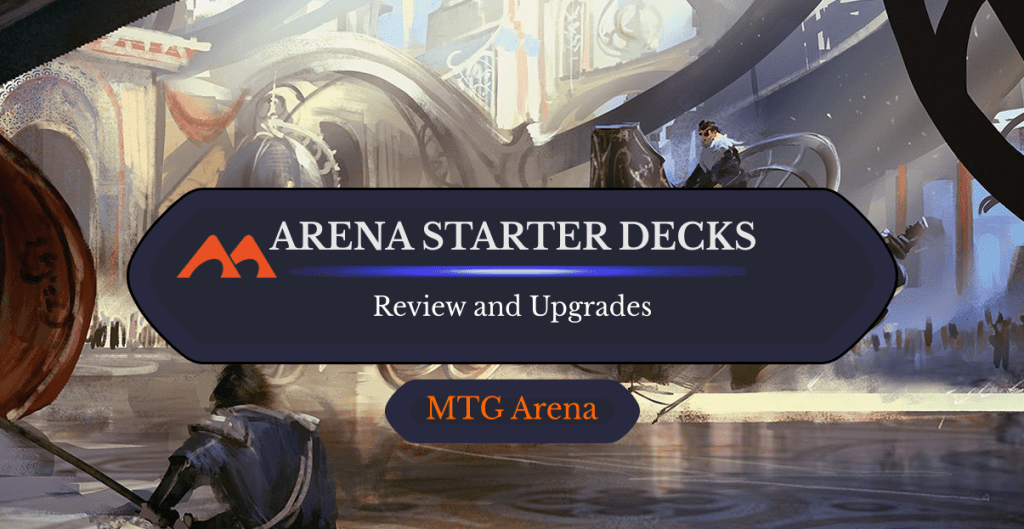
Start Your Engines | Illustration by Darek Zabrocki
Building Magic decks can be daunting for new players. There’s an overwhelming number of options, even when faced with preliminary decisions like picking a color combination or deck archetype.
The Arena starter decks are a great way to build your Arena collection and begin playing. Once you’ve gotten a few rounds under your belt and built up a collection of wildcards, the next step is to upgrade your decks! Here’s how.
Overview of Decks
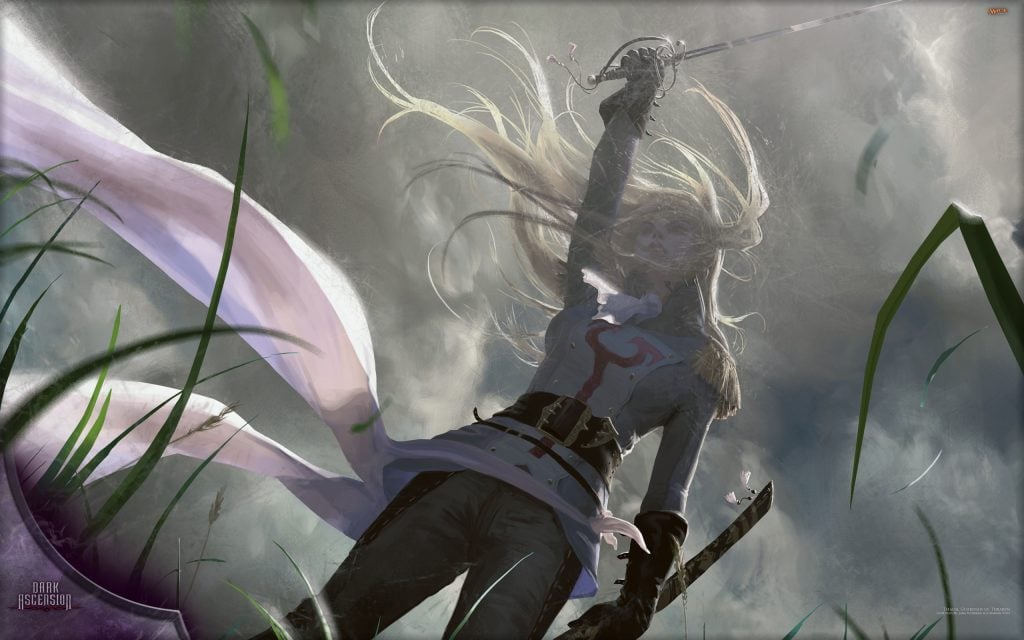
Thalia, Guardian of Thraben | Illustration by Jana Schirmer & Johannes Voss
- Keep the Peace : Utilize a small army of soldiers to maintain peace on the board by enforcing the law and bolstering your life total with lifegain.
- Aerial Domination : Take the skies and obliterate your land-locked foes with a winged army that ignores any attempt at defense.
- Cold-Blooded Killers : Overwhelm your opponents by slaughtering every opposing warrior and laying claim to a hollow fortress.
- Goblins Everywhere! : Bury your foes beneath an army of goblins bristling with weapons and fool-hardy courage.
- Large and In Charge : Crush your opponents beneath the greatest, most majestic creatures in the world and remind them of nature’s implacable power.
- Arcane Aggression : Use a barrage of flaming spells and clever wizards to obliterate your opponents in an arcane flurry.
- Charge Ahead : Take the battle straight to your foes with an army of massive, hasty creatures that win the war while your opponents sip their morning coffee.
- Grave Secrets : Slow the game down and win by trawling through your graveyard with recursive spells as you grind your opponent out of resources.
- Growing Hope : Use +1/+1 counters to turn a small, loyal army into an indomitable fighting force.
- High-Flying Valor : Assemble the greatest soldiers Dominaria has ever seen and show your opponents the terror of a well-trained army.
- Legions of Phyrexia : Utilize decades of Phyrexian preparation to overwhelm your opponents with a compleat army and bring the Multiverse to its knees.
- Rebel Armory : Use equipment to bolster the power of a scrappy rebel army to take on the greatest threats in the Multiverse and defend your home.
- Savage Scavengers : Fill your graveyard with creatures and reanimate them to bring a never-ending deluge of the dead upon your opponents.
- Scrapyard Sacrifice : Turn tiny creatures into scrap materials with your sacrifice cards and assemble the parts into ever better armies to fight with.
- Sylvan Wisdom : Forsee the future with elven magic and use your knowledge to make your elves stronger and faster than your enemies living in the moment.
Keep The Peace
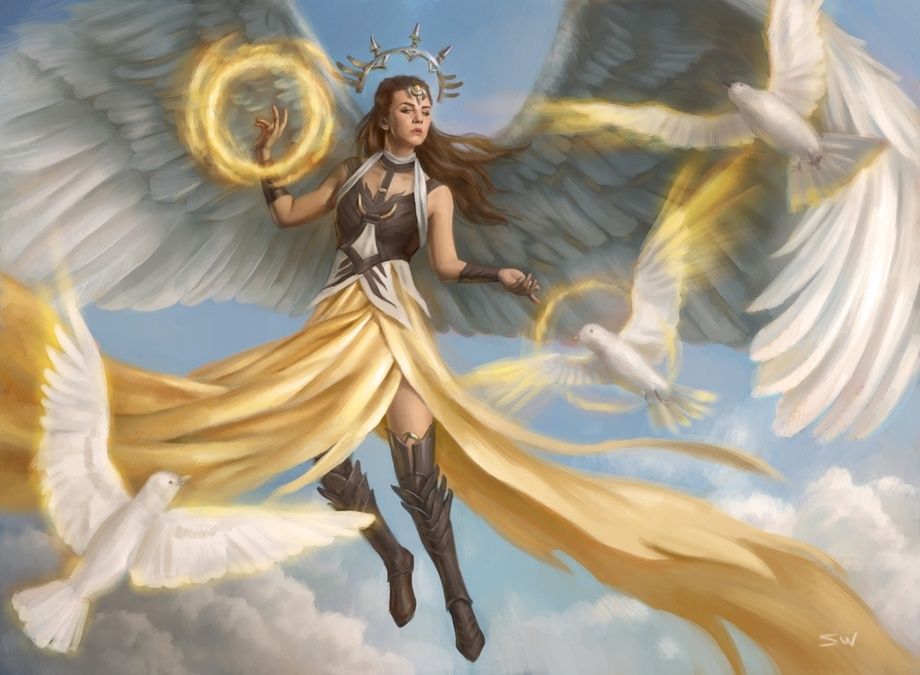
Angelic Guardian | Illustration by Sara Winters
Creatures (25)
Charmed Stray x4
Fencing Ace x2
Hallowed Priest x4
Impassioned Orator x3
Moorland Inquisitor x2
Angel of Vitality x2
Leonin Warleader x2
Serra Angel
Spiritual Guardian
Angelic Guardian
Inspiring Commander x2
Goring Ceratops
Instants (5)
Tactical Advantage x4
Confront the Assault
Sorceries (1)
Enchantments (4)
Lands (25)
Plains x25
This mono-white deck leans on white’s love of small creatures and lifegain to make an aggressive build that buffers its life total to keep it ahead against other aggressive decks. The most important aspect of piloting this deck effectively is focusing on how well the hand you keep curves out or plays spells each turn.
Strengths and Weaknesses
White weenie and lifegain decks have always been part of Magic. Filling the board with efficient creatures in the color defined by its efficient creatures is always a strong strategy. The biggest weakness of this deck is just weak cards that are ineffective on their own.
What to Change
Out:
- 4 Charmed Stray
- 4 Tactical Advantage
- 1 Confront the Assault
- 1 Bond of Discipline
- 1 Goring Ceratops
- 1 Spiritual Guardian
- 1 Angelic Guardian
- 1 Moorland Inquisitor
- 1 Angelic Reward
In:
- 3 Thalia, Guardian of Thraben
- 4 Recruitment Officer
- 2 Heliod, Sun-Crowned
- 2 Ossification
- 4 Lunarch Veteran
These changes focus on cutting the most ineffective and inefficient cards, like Charmed Stray and Goring Ceratops. Cards like Thalia, Guardian of Thraben and Recruitment Officer give up some late-game equity in favor of making your early game far stronger, while Heliod, Sun-Crowned and Lunarch Veteran strengthen your lifegain synergies.
Aerial Domination

Unsummon | Illustration by Izzy
Creatures (23)
Wall of Runes x2
Sworn Guardian x2
Waterkin Shaman x3
Cloudkin Seer x3
Warden of Evos Isle x3
Octoprophet x2
Soulblade Djinn x2
Windstorm Drake x2
Frilled Sea Serpent
Riddlemaster Sphinx x2
Windreader Sphinx
Instants (5)
Sorceries (4)
Winged Words x2
Sleep
Overflowing Insight
Enchantments (3)
Waterknot x3
Lands (25)
Island x25
Aggressive decks utilizing a bunch of cheap fliers are often quite powerful since flying lets you ignore opposing blockers. Mono-blue decks lean on tempo strategies that focus on gaining a temporary advantage, often by bouncing opposing creatures since blue doesn’t remove permanents as well as other colors. A big part of playing this deck well involves knowing when to use your bounce spells to answer a threat and when to hold them.
Strengths and Weaknesses
A bunch of cheap fliers is a great way to get your opponent’s life total to 0. This deck’s biggest weakness is that it has a bunch of non-flying creatures to hold the ground while your fliers get in over your opponents, but that leads to draws where your board is cluttered with blockers instead of advancing your board state.
What to Change
Out:
- 1 Overflowing Insight
- 2 Glint
- 2 Winged Words
- 3 Waterknot
- 2 Wall of Runes
- 2 Sworn Guardian
- 2 Octoprophet
- 1 Frilled Sea Serpent
In:
These changes focus on removing the cards that don’t work with your game plan. This aggressive deck isn’t interested in playing defensive creatures like Wall of Runes and Sworn Guardian when options like Faerie Mastermind and Siren Stormtamer provide pressure and disruption. Waterknot is clunkier than this deck needs, letting you use Fading Hope alongside increased card draw from Chart a Course and the last Cloudkin Seer to tempo out your opponent.
Cold-Blooded Killers
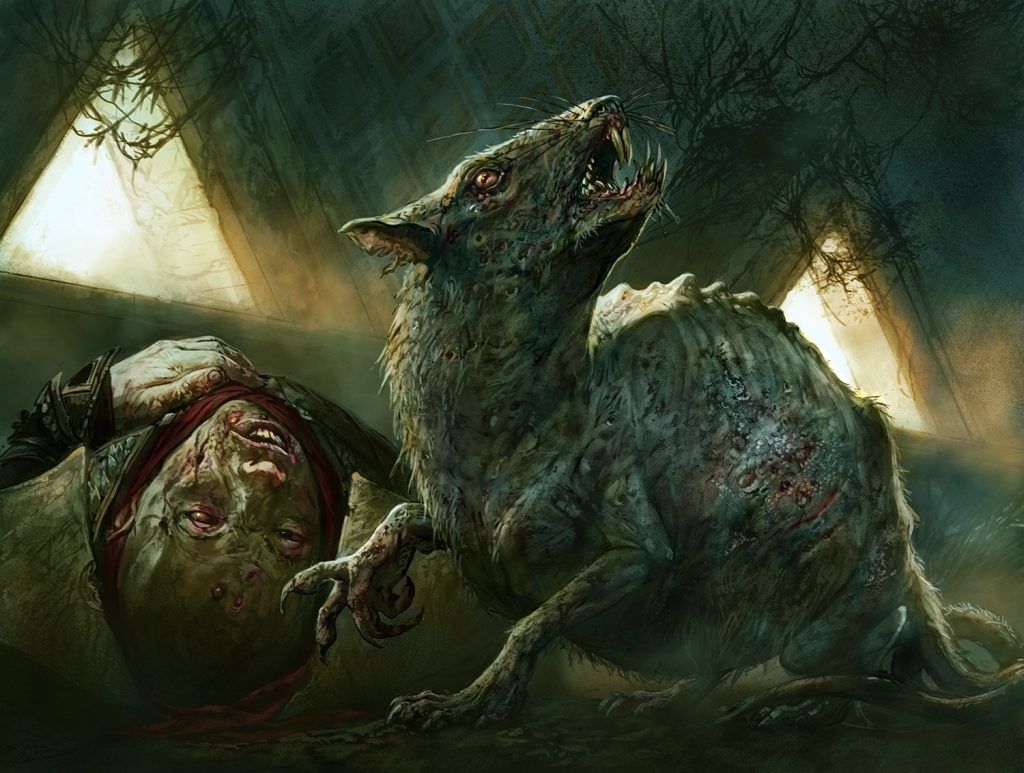
Typhoid Rat | Illustration by Dave Kendall
Creatures (22)
Sanitarium Skeleton x2
Typhoid Rats x2
Malakir Cullblade x3
Vampire Opportunist x2
Mardu Outrider x2
Savage Gorger x3
Skeleton Archer x2
Sengir Vampire x2
Soulhunter Rakshasa
Nightmare
Demon of Loathing x2
Instants (11)
Compound Fracture x4
Cruel Cut
Unlikely Aid x3
Murder x3
Sorceries (1)
Lands (25)
Swamp x25
Black excels at creature interaction, and this deck goes all-in on that with a bunch of removal alongside cheap creatures that win the game once you’ve killed everything your opponents have cast. Despite this abundant interaction, a key feature of this deck is knowing which threats deserve the Murder and which can simply be fought in combat with your creatures.
Strengths and Weaknesses
A bundle of creature interaction is always strong, especially since the starter decks are creature-focused. The deck’s biggest weakness is its creatures, which are ineffective if you don’t have a bunch of interaction.
What to Change:
Out:
- 2 Sanitarium Skeleton
- 2 Typhoid Rats
- 3 Malakir Cullblade
- 3 Unlikely Aid
- 2 Sengir Vampire
- 1 Eternal Thirst
- 2 Skeleton Archer
In:
- 3 Ravenous Chupacabra
- 4 Orcish Bowmasters
- 4 Deep-Cavern Bat
- 2 Dread Presence
- 3 Tendrils of Corruption
These changes remove all the ineffectual early creatures like Malakir Cullblade and Sanitarium Skeleton for more disruptive options that kill opposing creatures or attack their hand. You also have a couple of mono-black payoffs in Dread Presence and Tendrils of Corruption over weaker late-game plays that provide a lot of reach to end the game.
Goblin Everywhere!
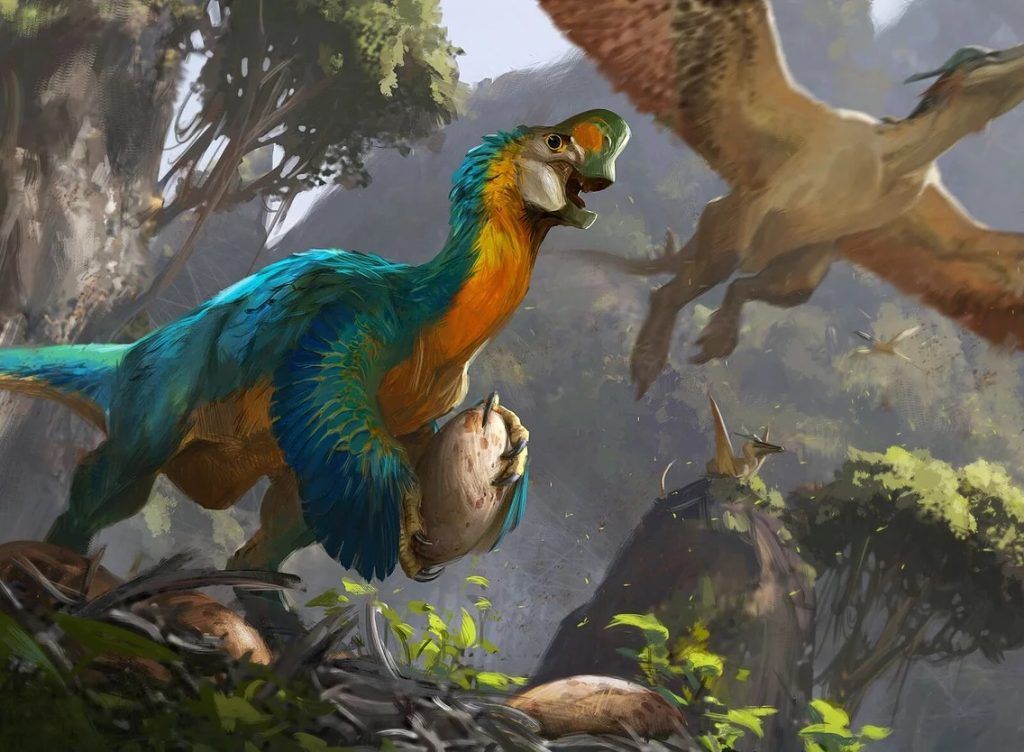
Nest Robber | Illustration by Jonathan Kuo
Creatures (20)
Tin Street Cadet x3
Goblin Tunneler x2
Nest Robber x4
Molten Ravager x2
Goblin Gang Leader x2
Goblin Trashmaster
Ogre Battledriver x2
Immortal Phoenix
Volcanic Dragon
Siege Dragon x2
Instants (9)
Shock x3
Storm Strike x2
Burn Bright x2
Inescapable Blaze x2
Sorceries (4)
Enchantments (2)
Lands (25)
Mountain x25
Mono-red is all about going fast, and red mages have utilized goblins as a means to that end for almost as long as we’ve played Magic. Rather like the white deck, piloting this Goblins list is a matter of sequencing and understanding which cards to cast first to deal the most damage.
Strengths and Weaknesses
The greatest weakness of this deck is that it has shockingly few goblins for a typal deck, leaning on a lot of expensive dragons that chaff with the mono-red ideal of going wide and fast. There’s plenty of potential for red aggro here, but it needs to get brought out.
What to Change
Out:
- 2 Inescapable Blaze
- 2 Raid Bombardment
- 2 Storm Strike
- 2 Siege Dragon
- 1 Volcanic Dragon
- 1 Immortal Pheonix
- 2 Molten Ravager
- 4 Nest Robber
In:
- 4 Dragon Fodder
- 4 Goblin Instigator
- 4 Battle Cry Goblin
- 4 Goblin Chieftain
- 2 Hobgoblin Bandit Lord
- 2 Gempalm Incinerator
This deck has one more change than the others, but it’s all to make the deck do what it says on the tin. Making all your early plays make multiple goblins makes cards like Ogre Battledriver and your lords far better. Stripping away all the expensive cards gives this deck the explosive power it needs to rip through your opponents.
Large and In Charge

Jungle Delver | Illustration by Kieran Yanner
Creatures (27)
Jungle Delver x3
Ilysian Caryatid x4
Woodland Mystic x2
Wildwood Patrol x2
Baloth Packhunter x4
Prized Unicorn
Rumbling Baloth x2
World Shaper
Gigantosaurus x2
Sentinel Spider x2
Affectionate Indrik x2
Rampaging Brontodon x2
Instants (2)
Sorceries (3)
Rabid Bite x3
Enchantments (3)
Colossal Majesty x2
Epic Proportions
Lands (25)
Forest x25
Mono-green is always about going bigger than your opponents between mana acceleration that allows you to play more expensive spells and creatures that are naturally the largest in the game. This overwhelming strength often leads to powerful, explosive draws. Ways to power out your big creatures are important.
Strengths and Weaknesses
This is one of the better-balanced mono-colored decks, if only because playing early ramp creatures into big threats is hard to mess up. This deck has a few cards that could be upgraded, but it doesn’t need as hefty an overhaul as the white or red decks.
What to Change
Out:
- 3 Jungle Delver
- 2 Stony Strength
- 1 Epic Proportions
- 2 Rampaging Brontodon
- 1 World Shaper
- 1 Prized Unicorn
- 2 Sentinel Spider
- 2 Wildwood Patrol
- 1 Forest
In:
- 2 Affectionate Indrik
- 3 Kogla, the Titan Ape
- 3 Elder Gargaroth
- 2 Garruk's Uprising
- 4 Glimpse the Core
- 1 Rishkar's Expertise
These changes help the deck lean into mana acceleration and go big by removing cards like Jungle Delver and Stony Strength in favor of additional mana acceleration. You can also upgrade your creatures significantly; focusing on creatures like Affectionate Indrik and Kogla, the Titan Ape that function as removal gets you way ahead while a bit of extra card draw keeps you there.
Arcane Aggression
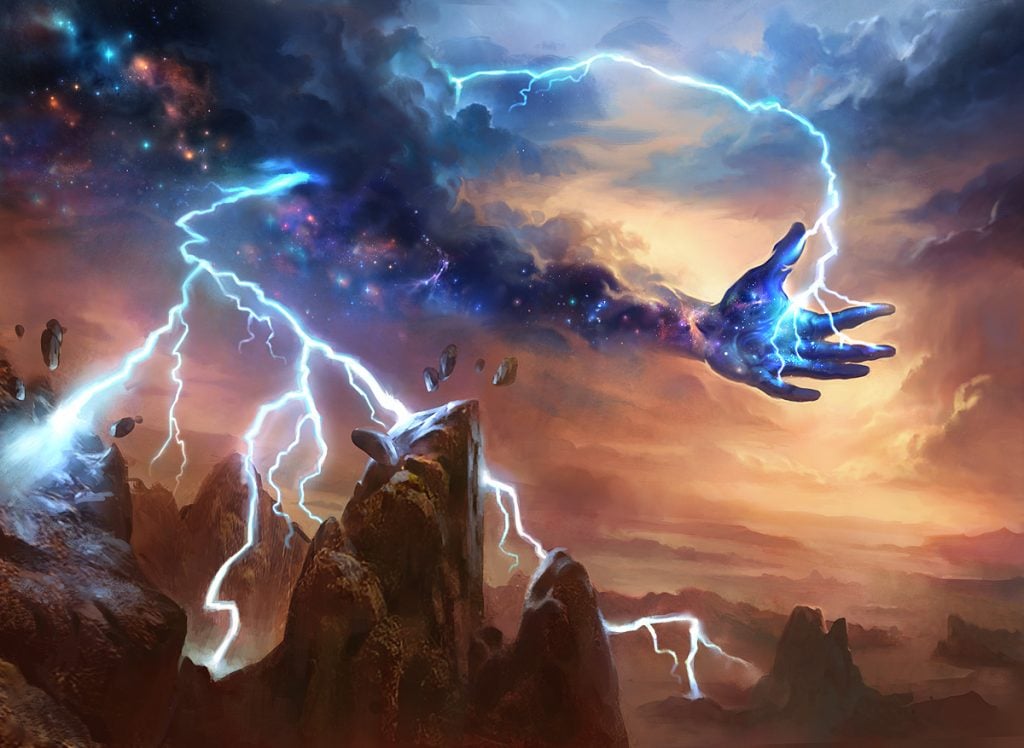
Lightning Strike | Illustration by Adam Paquette
Creatures (17)
Electrostatic Infantry x2
Haughty Djinn
Third Path Iconoclast x2
Urabrask
Gandalf the Grey
Ghitu Embercoiler
Chrome Host Seedshark
Baral and Kari Zev
Tolarian Terror x2
Najal, the Storm Runner
Meldweb Curator x2
Ghitu Amplifier x2
Instants (12)
Flame of Anor
Shore Up x2
Meeting of Minds x3
Lightning Strike x3
Volcanic Spite x3
Sorceries (6)
Eyes of Gitaxias x3
Ral's Reinforcements x3
Lands (25)
Mountain x9
Island x7
Shivan Reef
Swiftwater Cliffs x4
Molten Tributary x4
Izzet spellslinger decks have a lot of range, but this one focuses on going fast and aggressive. This leads well to utilizing burn spells that damage your opponent or their creatures. Careful sequencing is key here, especially once your upgrades add more prowess creatures.
Strengths and Weaknesses
This is a powerful deck. You’ve got a lot of strong interaction and card draw alongside cheap creatures that can win the game when left unchecked. Its curve is a little top-heavy for an aggressive deck such as this.
What to Change
Out:
- 1 Najal, the Storm Runner
- 2 Meldweb Curator
- 3 Eyes of Gitaxias
- 2 Shore Up
- 1 Urabrask
- 1 Island
- 2 Mountain
- 1 Volcanic Spite
- 2 Ghitu Amplifier
In:
Since Arcane Aggression was already powerful, these changes are less about “fixing” flaws and more about upgrading concepts. Consider and Chart a Course are significant card draw upgrades, and adding more cheap spells makes two more Tolarian Terror quite strong. Monastery Swiftspear is one of the best aggressive creatures ever, and this deck is happy to play it.
Charging Ahead
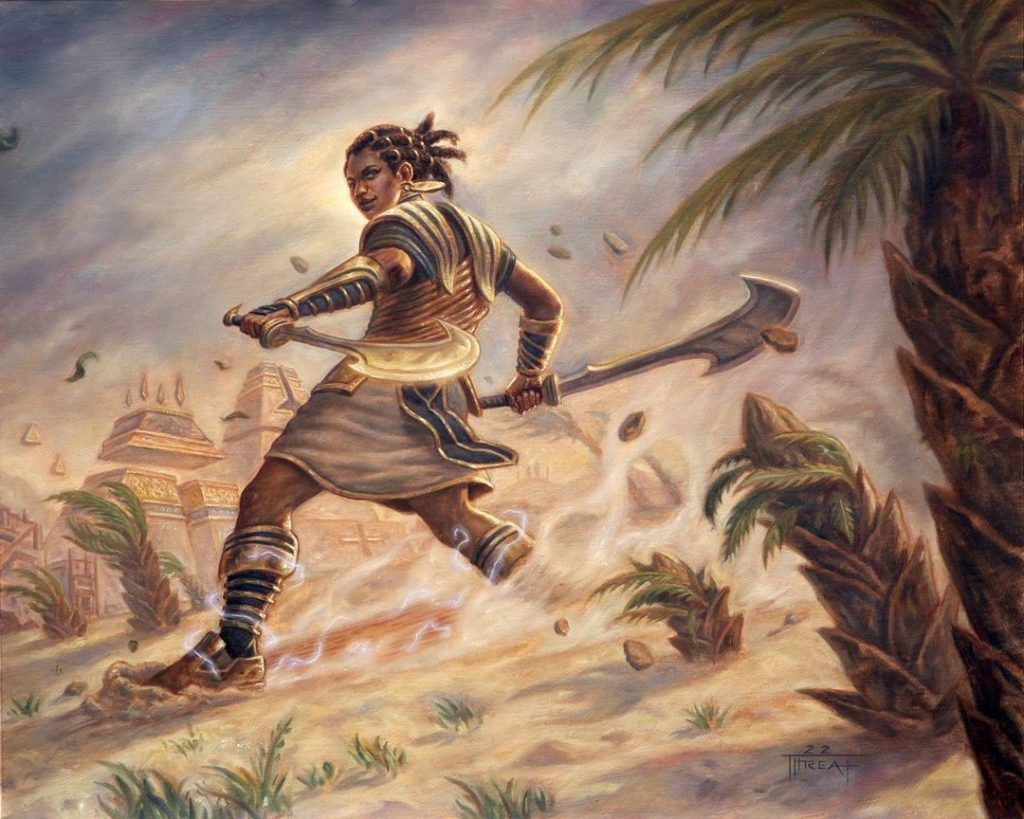
Samut, Vizier of Naktamun | Illustration by Jarel Threat
Creatures (27)
Dragon Whelp x2
Samut, Vizier of Naktamun
Feldon, Ronom Excavator
Tomakul Phoenix
Migloz, Maze Crusher
Rampaging Raptor
Surrak and Goreclaw
Ogre Battledriver
Shivan Branch-Burner x2
Ilysian Caryatid x3
Volcanic Dragon x2
Sprouting Goblin x2
Viashino Branchrider x3
Furnace Strider x2
Kolaghan Warmonger x2
Ravenous Sailback x2
Instants (5)
Colossal Growth x2
Cosmic Hunger x3
Sorceries (3)
Lands (25)
Mountain x8
Forest x8
Copperline Gorge
Wooded Ridgeline x4
Rugged Highlands x4
Haste is a very effective keyword for aggressive decks; more than any other keyword, it’s what makes creatures powerfully aggressive. Charging Ahead uses these haste creatures for a powerful deck with a dragon subtheme and a host of good fight spells to clear the path. It’s an aggressive deck that goes a bit bigger than similar strategies; making good use of your mana dorks is important to pilot this well.
Strengths and Weaknesses
This is a well-conceived deck. It falls a little flat as an aggressive deck; it’s woefully short on good 1- and 2-drops, while its top-end costs more mana than an aggressive deck wants. Aside from curve flaws, it has a very effective game plan.
What to Change
Out:
- 3 Viashino Branchrider
- 2 Furnace Strider
- 2 Ravenous Sailback
- 2 Colossal Growth
- 2 Dragon Whelp
- 1 Ogre Battledriver
- 1 Feldon, Ronom Excavator
- 2 Shivan Branch-Burner
In:
These changes exchange weak aggressive creatures like Viashino Branchrider and Feldon, Ronom Excavator for more early acceleration and some of the weaker 5-drops for some of the best in Glorybringer and Goldspan Dragon. The increase in dragons lets you round out the playset of Kolaghan Warhammer. These changes affect the deck’s game plan; it’s less of an aggressive deck and more of a midrange deck now.
Grave Secrets

Reezug, the Bonecobbler | Illustration by stoicHua
Creatures (20)
Falliji Archaeologist x2
Reezug, the Bonecobbler
Hidetsugu and Kairi
Mercurial Spelldancer
Rusko, Clockmaker
Rona, Sheoldred's Faithful x2
Trawler Drake x2
Vohar, Vodalian Desecrator x2
Academy Wall x3
Meldweb Curator x2
Halo-Charged Skaab x3
Instants (11)
Black Sun's Twilight
Murder x2
Rona's Vortex x2
Vesuvan Mist x2
Unseal the Necropolis x2
Tribute to Urborg x2
Sorceries (4)
Breach the Multiverse
Gix's Command
Phyrexian Espionage x2
Lands (25)
Swamp x7
Island x9
Dismal Backwater x4
Darkslick Shores
Contaminated Aquifer x4
Grave Secrets stands out as a control deck, while the others focus on more aggressive strategies. It also offers mill as a win condition with cards like Breach the Multiverse and Halo-Charged Skaab. You’ll need to play this deck patiently to find its full potential.
Strengths and Weaknesses
Playing a mill strategy is quite intriguing, especially for a deck in a format of creatures. This deck’s primary weaknesses are that its mill cards are slow, and the removal isn’t as effective as you’d want from control shells, especially when you know all the other decks in the challenge are creature-focused.
What to Change
Out:
- 2 Trawler Drake
- 2 Rona, Sheoldred's Faithful
- 2 Vesuvan Mist
- 2 Unseal the Necropolis
- 1 Reezug, the Bonecobbler
- 1 Hidetsugu and Kari
- 2 Tribute to Urborg
- 1 Mercurial Spelldancer
- 2 Fallaji Archaeologist
In:
These changes primarily focus on strengthening your mill plan and getting better removal. Go for the Throat kills basically everything, and a wrath like Crux of Fate is vital for control decks in a creature-heavy meta. Cruel Somnophage provides a cheap threat alongside your mill, which Teferi's Tutelage makes more consistent.
Growing Hope
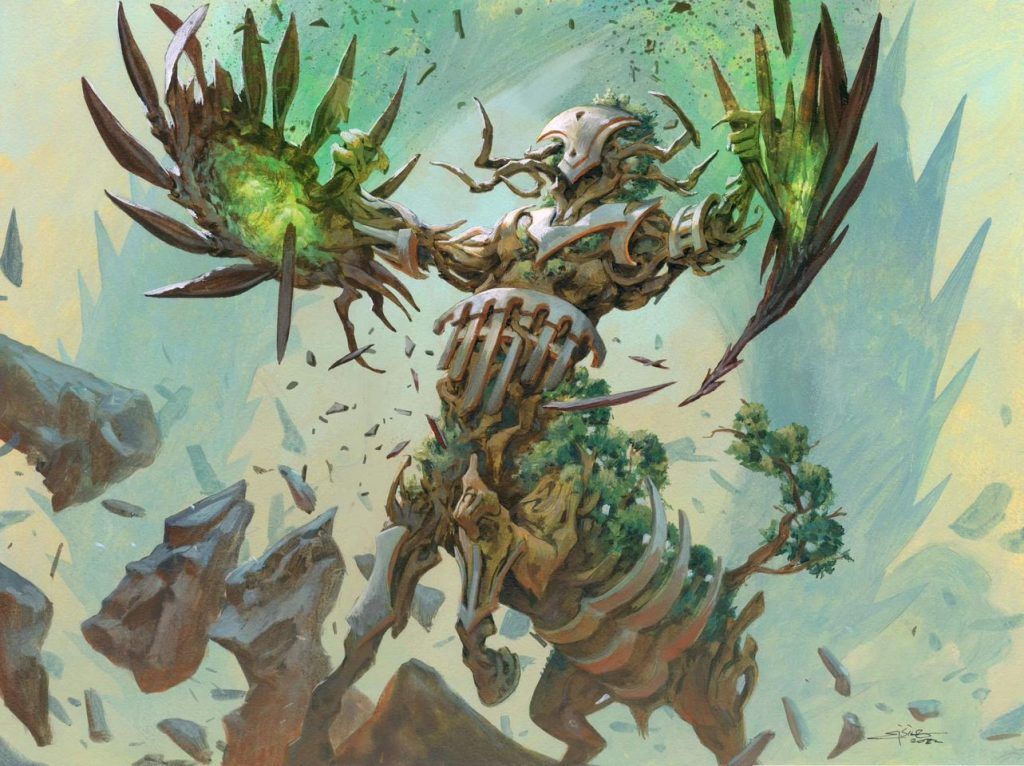
Botanical Brawler | Illustration by Jesper Ejsing
Creatures (20)
Enduring Bondwarden x2
Botanical Brawler x2
Clay Champion
Dusk Legion Duelist
Serra Redeemer
Quirion Beastcaller
Benalish Knight-Counselor x2
Kami of Whispered Hopes x2
Juniper Order Rootweaver x3
Ruins Recluse x2
Fairgrounds Trumpeter x3
Instants (6)
Sylvan Smite x2
Strength of the Coalition x2
Fertilid's Favor x2
Sorceries (5)
Storm the Seedcore x2
Titania's Command
Bushwhack x2
Enchantments (3)
Artifacts (1)
Lands (25)
Blossoming Sands x4
Razorverge Thicket
Radiant Grove x4
Plains x8
Forest x8
The Growing Hope deck focuses on bulking up your creatures by throwing +1/+1 counters on a small army. It’s a great game plan, focusing on building an aggressive army that scales with the game as it steadily grows beyond what your opponents can handle. This is another deck where careful sequencing matters.
Strengths and Weaknesses
This strikes me as one of the stronger decks. It’s got a consistent, powerful game plan and has incredibly strong draws. Rather like the Arcane Aggression deck, my changes focus on bolstering what’s already here instead of applying the drastic changes Charging Ahead got.
What to Change
Out:
- 2 Strength of the Coalition
- 2 Fertilid's Favor
- 2 Ruins Recluse
- 2 Forest
- 2 Enduring Bondwarden
- 2 Storm the Seedcore
- 3 Juniper Order Rootweaver
In:
These changes fill out playsets of cards already present in the deck while focusing on giving the deck cheap ways to spread around counters to get the most out of Kami of Whispered Hopes and other cards that help stack counters.
High-Flying Valor
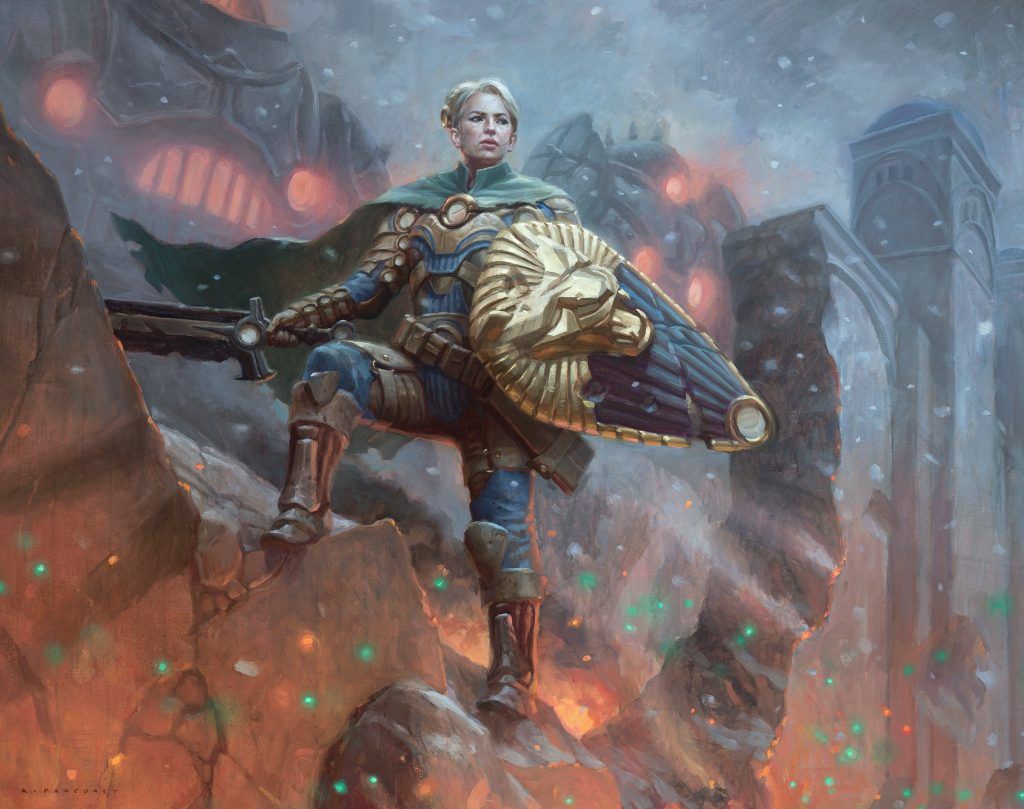
Myrel, Shield of Argive | Illustration by Ryan Pancoast
Creatures (26)
Myrel, Shield of Argive
Valiant Veteran
Siege Veteran
Rescue Retriever
Harbin, Vanguard Aviator
Skystrike Officer
Recruitment Officer x2
Patchplate Resolute x2
Zephyr Sentinel x2
Yotian Tactician x2
Resolute Reinforcements x2
Ambush Paratrooper x3
Survivor of Korlis x3
Scrapwork Cohort x2
Aeronaut Cavalry x2
Instants (2)
Sorceries (3)
Lay Down Arms x2
Mass Production
Enchantments (4)
By Elspeth's Command
Prison Sentence x3
Lands (25)
Island x6
Plains x10
Tranquil Cove x4
Fortified Beachhead
Idyllic Beachfront x4
Another of the better decks, High-Flying Valor, is a soldier typal deck focusing on pummeling its opponents with a bunch of soldiers and cards that benefit you from playing them. This is a fantastically aggressive deck that rewards curving out well and knowing when to deploy your lords.
Strengths and Weaknesses
This is a really great deck. It’s got a solid curve, including a bunch of fliers to help get over ground blockers, and some good lords to back them up. These changes tweak the list; take out some of the draft cards, and focus on making your better draws occur more often.
What to Change
Out:
- 3 Survivor of Korlis
- 2 Patchplate Resolute
- 2 Aeronaut Cavalry
- 1 Mass Production
- 3 Prison Sentence
- 1 Rescue Retriever
- 1 Island
- 2 Elspeth's Smite
In:
- 3 Harbin, Vanguard Aviator
- 3 Valiant Veteran
- 2 Recruitment Officer
- 2 Resolute Reinforcements
- 3 Ossification
- 2 Lay Down Arms
These changes bring in playsets of the most valuable creatures you want to draw every game: the lords and Resolute Reinforcements, which makes them better. I also upgraded the removal by cutting some clunkier interactive spells.
Legions of Phyrexia
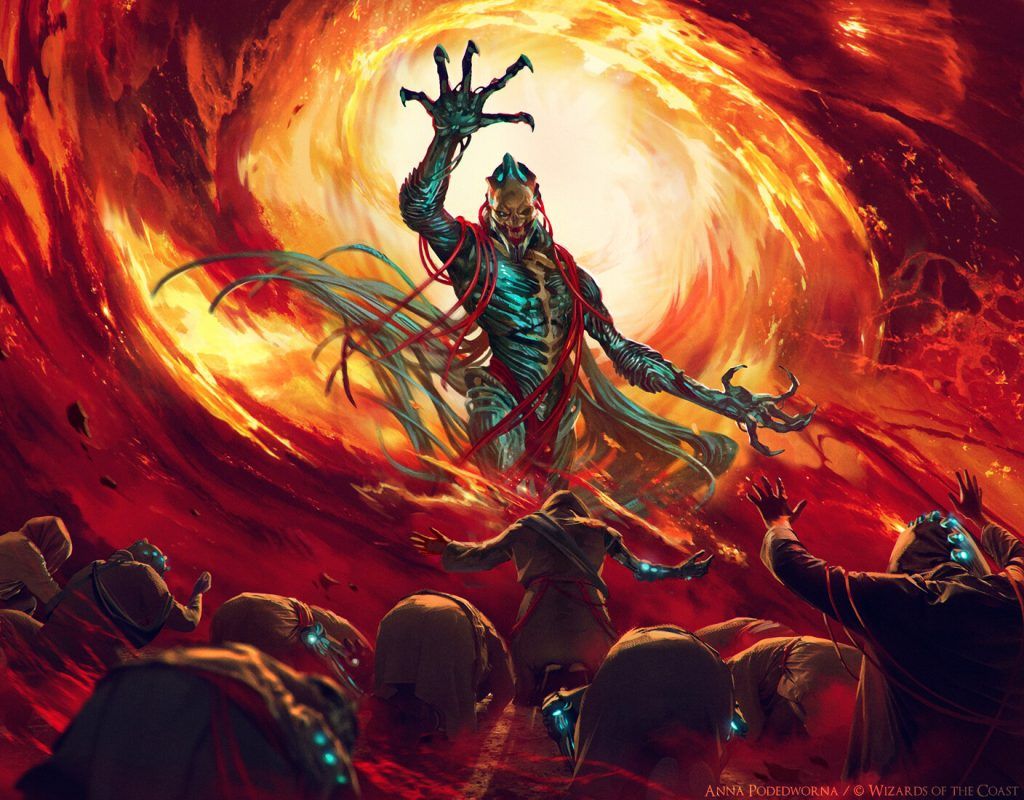
Gix, Yawgmoth Praetor | Illustration by Anna Podedworna
Creatures (22)
Phyrexian Missionary x2
Gix, Yawgmoth Praetor
Essence of Orthodoxy
Progenitor Exarch
Bloated Processor
Grafted Butcher
Norn's Inquisitor x2
Seedpod Caretaker x2
Alabaster Host Intercessor x3
Infected Defector x3
Benalish Sleeper x3
Ichor Drinker x2
Instants (4)
Sorceries (2)
Enchantments (7)
Sculpted Perfection x2
Phyrexian Arena
Ossification x2
Phyrexian Awakening x2
Lands (25)
Caves of Koilos
Sunlit Marsh x4
Scoured Barrens x4
Plains x9
Swamp x7
The Legions of Phyrexia deck focuses on the incubate mechanic from March of the Machine to unleash an army of artifact tokens on your opponents. This is much grindy than some of the other decks; many of your creatures pose a threat and make an additional one, giving you plenty of resources to grind out your opponents. This is a great choice for players who can be aggressive but don’t mind grinding like a traditional midrange deck.
Strengths and Weaknesses
This is a well-rounded midrange deck. There’s a lot of token production, ways to make those tokens stronger, and decent removal to back it all up. Changes here focus on increasing threat density and upgrading the clunkier cards.
What to Change
Out:
- 3 Infected Defector
- 3 Deadly Derision
- 1 Bloated Processor
- 2 March Towards Perfection
- 2 Ichor Drinker
- 2 Seedpod Caretaker
- 2 March Towards Perfection
In:
- 3 Go for the Throat
- 3 Sheoldred, the Apocalypse
- 2 Norn's Inquisitor
- 1 Phyrexian Scriptures
- 2 Skrelv's Hive
- 3 Grafted Butcher
- 1 Phyrexian Missionary
The highlights here are getting in Go for the Throat and Sheoldred, the Apocalypse in over weaker creatures and interaction. The addition of Skrelv's Hive and more recursive abilities makes the deck a bit grindier.
Rebel Armory
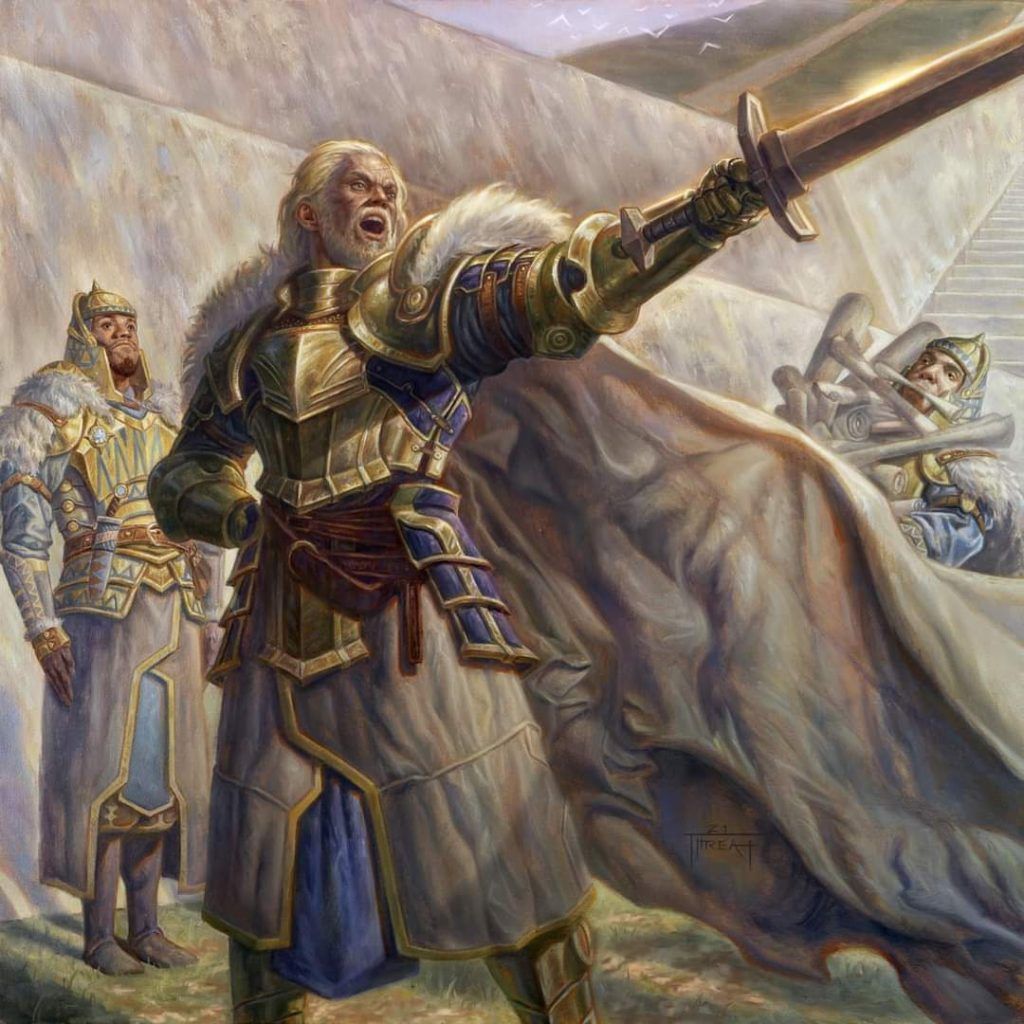
Baird, Argivian Recruiter | Illustration by Jarel Threat
Creatures (12)
Danitha, Benalia's Hope
Baird, Argivian Recruiter x2
Nahiri, Forged in Fury
Astor, Bearer of Blades
Kemba, Kha Enduring
Rhuk, Hexgold Nabber
Kemba's Outfitter x2
Bladegraft Aspirant x3
Instants (4)
Rebel Salvo x2
Hurloon Battle Hymn x2
Enchantments (3)
Artifacts (16)
Dragonwing Glider
Bladehold Cleaver
Bladehold War-Whip x2
Hexgold Halberd x2
Hexgold Hoverwings x2
Barbed Batterfist x3
Vulshok Splitter x3
Hexgold Sledge x2
Lands (25)
Battlefield Forge
Wind-Scarred Crag x4
Sacred Peaks x4
Mountain x10
Plains x6
The Boros () deck centers on the For Mirrodin! mechanic for an aggressive equipment deck, and it’s one of the strongest. For Mirrodin! is incredibly powerful as a two-for-one mechanic. You’re always getting equipment and a creature, giving you more resources than your opponents.
Strengths and Weaknesses
This deck is just incredibly strong. We’ve got an excellent mana curve with powerful creatures. All the equipment makes our dorky creatures powerful and gives us ways to use excess mana. There’s room for a few tweaks, but I don’t want to do much to disrupt what this deck has going on.
What to Change
Out:
- 3 Vulshok Splitter
- 2 Hurloon Battle Hymn
- 3 Planar Disruption
- 2 Mountain
- 1 Rhuk, Hexgold Nabber
- 3 Bladegraft Aspirant
In:
- 1 Baird, Argivian Recruiter
- 2 Rebel Salvo
- 2 Ossification
- 3 Sram, Senior Edificer
- 2 Kellan, the Fae-Blooded
- 2 Valduk, Keeper of the Flame
- 2 Dire Flail
These changes ditch the weakest equipment and add some powerful cards that reward you for playing all this equipment, like Sram, Senior Edificer and Kellan, the Fae-Blooded. Dire Flail is a great new addition that gives the deck extra reach.
Savage Scavengers

Glissa Sunslayer | Illustration by Krharts
Creatures (24) (24)
Diminished Returner x2
Wary Thespian x3
Glissa Sunslayer
Terror of Towashi
Gixian Recycler
Deathbloom Ritualist
Sauron, the Necromancer
Cult Conscript x2
Phyrexian Gargantua x2
Ravenous Gigamole x3
Burrowing Razormaw x2
Blanchwood Prowler x3
Skyfisher Spider x2
Instants (7)
Go for the Throat x2
Overwhelming Remorse x2
Vanquish the Weak x3
Sorceries (3)
Urborg Repossession x2
Shadow of the Enemy
Artifacts (1)
Lands (25)
Llanowar Wastes
Haunted Mire x4
Jungle Hollow x4
Swamp x8
Forest x8
Golgari () decks often play around with the graveyard, and Savage Scavengers is no different. Utilizing the graveyard as a resource gives decks resiliency against removal but also lets you turn self-mill cards into card advantage.
Strengths and Weaknesses
This deck offers a solid base for a graveyard deck but has a couple of weak cards and some things that don’t really fit. The cards that care about dying are a little out of place in a deck without sacrifice outlets. This deck is well-positioned to make use of cards from the new set.
What to Change
Out:
- 2 Cult Conscript
- 3 Vanquish the Weak
- 1 Shadow of the Enemy
- 1 Deathbloom Ritualist
- 2 Burrowing Razormaw
- 3 Wary Thespian
- 2 Urborg Repossession
- 1 Skyfisher Spider
In:
These changes focus heavily on descend cards from The Lost Caverns of Ixalan because they provide powerful payoffs to the self-mill already present in the deck. The Mycotyrant and Souls of the Lost provide significant threats, while Chupacabra Echo greatly ups the removal suite while maximizing the number of permanents in this deck.
Scrapyard Sacrifice
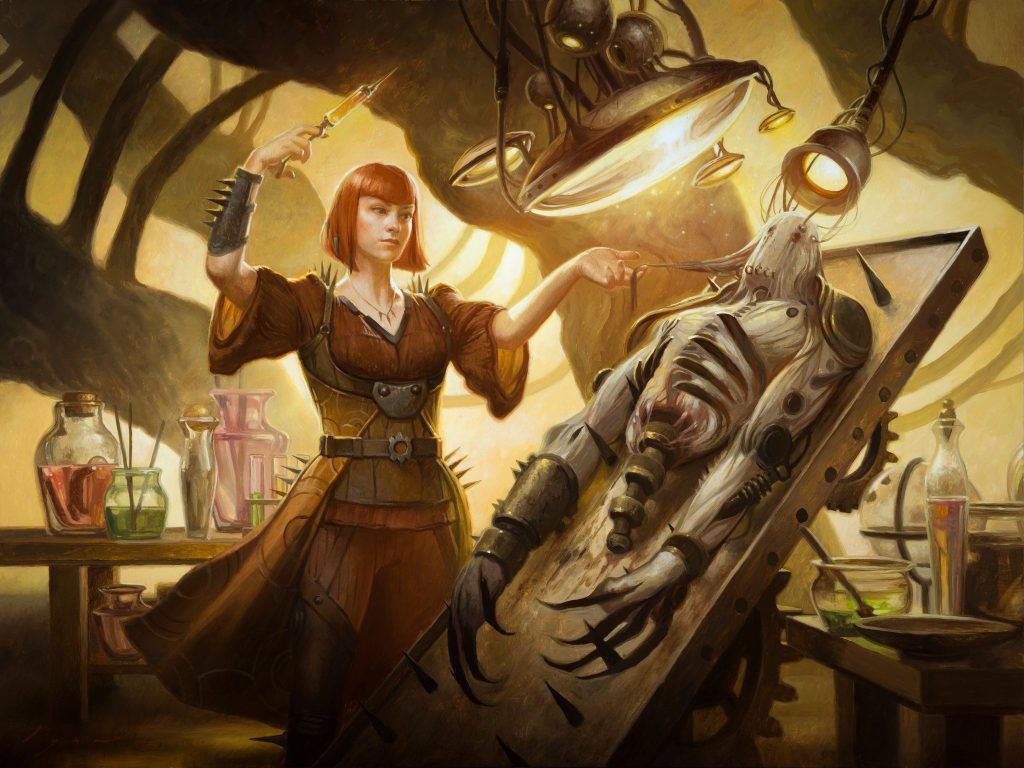
Ashnod, Flesh Mechanist | Illustration by Howard Lyon
Creatures (24)
Ashnod, Flesh Mechanist
Fallaji Antiquarian
Stormclaw Rager x2
Mishra, Claimed by Gix
Phyrexian Dragon Engine
Rankle and Torbran
Vraan, Executioner Thane
Sengir Connoisseur x2
Charforger x2
Testament Bearer x3
Sanitarium Skeleton x3
Gixian Infiltrator x3
Etched Familiar x3
Instants (7)
Corrupted Conviction x2
Ashnod's Intervention x2
Final Flourish x3
Sorceries (3)
Artifacts (1)
Lands (25)
Sulfurous Springs
Bloodfell Caves x4
Geothermal Bog x4
Swamp x9
Mountain x7
Rakdos () decks love sacrificing permanents for all kinds of value, and this starter deck is no different, even if it’s a bit weaker than you’d want to see. Sacrifice decks function in a payoff-enabler pattern; your cards either give you sacrifice fodder or a reason to sacrifice those creatures. Finding the right balance is crucial to piloting sacrifice decks, also known as aristocrat decks.
Strengths and Weaknesses
There frankly aren’t many strengths here. Sacrifice strategies are strong, but the individual cards in this deck are relatively weak. There aren’t many cards that reward us for sacrificing, some of our fodder is way too expensive, and the whole thing needs some tweaking to bring it up to snuff.
What to Change
Out:
- 3 Testament Bearer
- 3 Gixian Infiltrator
- 1 Ashnod, Flesh Mechanist
- 2 Ashnod's Intervention
- 1 Mishra, Claimed by Gix
- 1 Phyrexian Dragon Engine
- 1 Fallaji Antiquarian
- 1 Final Flourish
- 2 Charforger
In:
- 3 Yawgmoth, Thran Physician
- 3 Orcish Bowmasters
- 4 Nested Shambler
- 3 Juri, Master of the Revue
- 2 Mayhem Devil
These changes try to fix some of the flaws in the deck by removing expensive cards or cards that don’t interact with the sacrifice game plan in favor of better sacrifice fodder like Nested Shambler and Orcish Bowmasters. You also get some stronger sacrifice payoffs; Yawgmoth, Thran Physician is a great card to pump fodder into while Juri, Master of the Revue and Mayhem Devil wreak havoc on your opponents.
Sylvan Wisdom
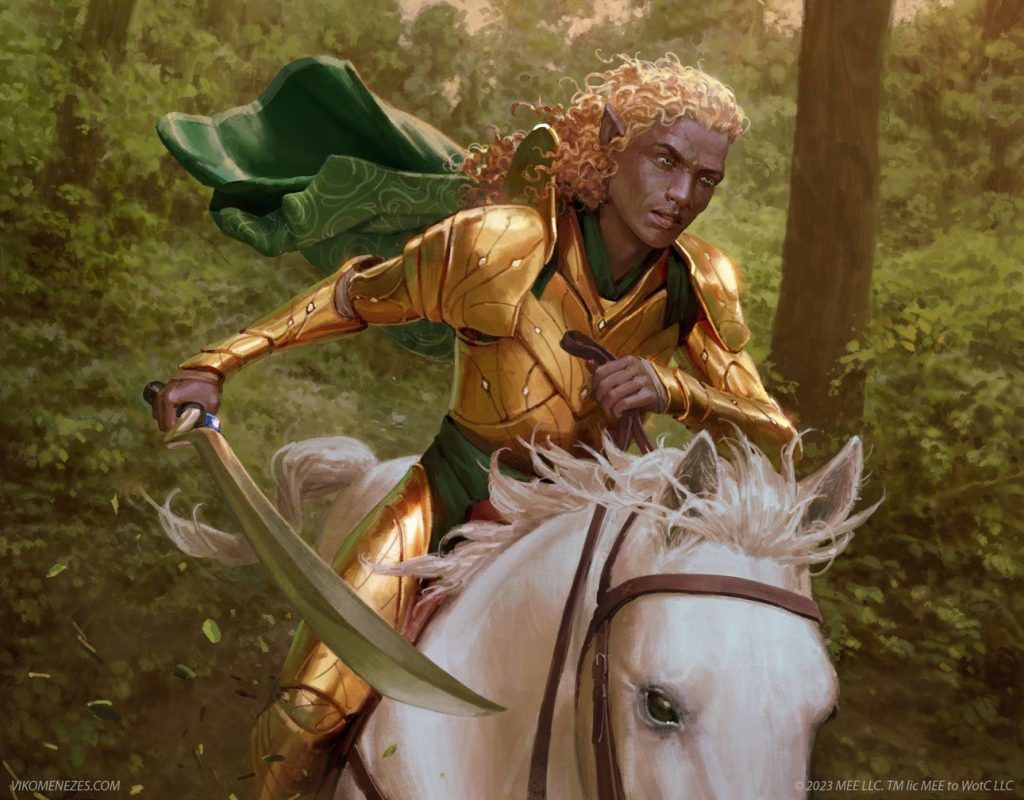
Glorfindel, Dauntless Rescuer | Illustration by Viko Menezes
Creatures (22)
Nimrodel Watcher x3
Nissa, Resurgent Animist
Arwen Undómiel x2
Ezuri, Stalker of Spheres
Elrond, Master of Healing
Llanowar Loamspeaker
Celeborn the Wise x2
Glorfindel, Dauntless Rescuer
Grey Havens Navigator x3
Galadhrim Guide x2
Chance-Met Elves x3
Lothlórien Lookout x2
Instants (4)
Desynchronize x2
Bite Down x2
Sorceries (6)
Marwyn's Kindred
Impede Momentum x2
Elven Farsight x3
Artifacts (1) (1)
Enchantments (2) (2)
Tribute to the World Tree
Lost Isle Calling
Lands (25)
Island x6
Yavimaya Coast
Tangled Islet x4
Thornwood Falls x4
Forest x10
Like the Selesnya deck, Sylvan Wisdom leans on +1/+1 counters to help bolster its creatures. Unlike the other deck, this one is quite a bit weaker. Simic scrying didn’t work well in the Limited environment this deck was adapted from. It’s still rather weak here, but there’s still room for improvement.
Strengths and Weaknesses
The main issue is that scrying is a hard mechanic to build a deck around. Incidental scrying? Excellent. But focusing on it doesn’t win the way building around tokens or card draw does. That said, you can still work to increase this deck’s strength by focusing on a few good elves and surrounding them with cards that scry and have powerful effects.
What to Change
Out:
- 2 Lothlorien Lookout
- 3 Grey Havens Navigator
- 1 Marwyn's Kindred
- 1 Lost Isle Calling
- 1 Mirror of Galadriel
- 2 Galadhrim Guide
- 2 Desynchronize
- 2 Celeborn the Wise
- 1 Glorfindel, Dauntless Rescuer
In:
- 1 Arwen Undómiel
- 2 Elrond, Master of Healing
- 3 Elvish Mariner
- 3 Fading Hope
- 3 Elrond, Lord of Rivendell
- 1 Nimrodel Watcher
- 2 Spectral Sailor
The best draws lean on using Arwen Undomiel and Elrond, Master of Healing to put +1/+1 counters on creatures. To maximize this, I’ve removed everything that gets a temporary buff when you scry in favor of more cards that distribute counters, more incidental scrying instead of cards that only scry, and Elvish Mariner to facilitate aggressive, tempo-heavy draws.
Wrap Up

Fading Hope | Illustration by Rovina Cai
The Arena starter decks are fantastic ways for new players to dip their toes into the wide world of Constructed Magic. Building a deck from the thousands of available cards is daunting, but the starter decks give a solid introduction to many deckbuilding concepts.
The best way to use them is to play with them often, learn what works and what doesn’t, and figure out how to bridge the game between the two. What’s your favorite color pair? Which of these decks do you want to play the most? Let me know in the comments or on the Draftsim Discord!
Stay safe, and thanks for reading!
Follow Draftsim for awesome articles and set updates: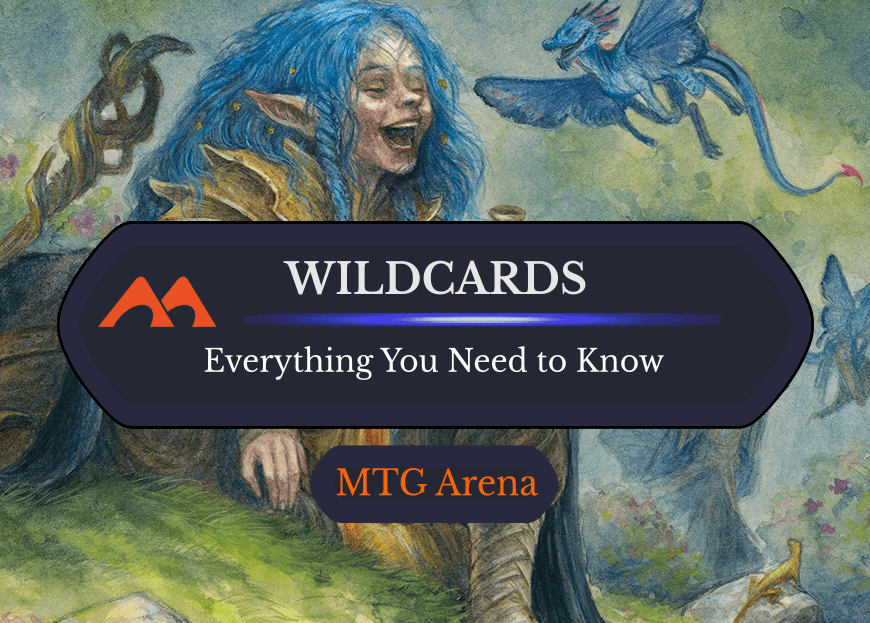
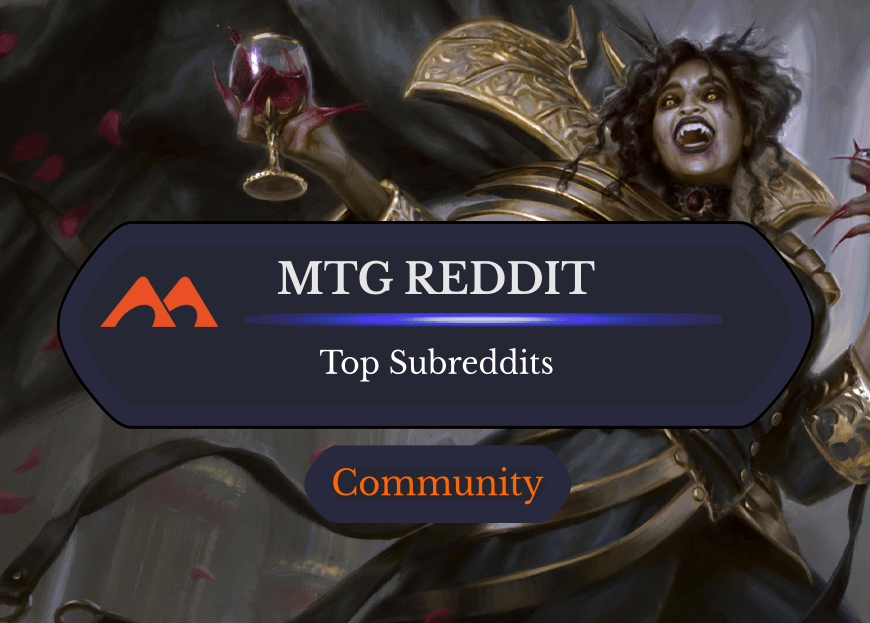
Add Comment